Right Plant, Right Place, Right Purpose, Right Management
The right combination of perennial pastures put in the right part of the landscape for the right purpose and with the right management can extend the growing season, increase profitability, and maintain ground cover and perennial persistence. Lucerne and chicory can also reduce leakage of water below the root zone.
Main findings
Higher production from pastures for longer
- Diversity of perennial pasture species across the landscape extended the growing season and allowed greater flexibility for livestock management.
- Triple (lucerne, perennial ryegrass and summer active tall fescue) and Ryegrass (early, mid and late finishing perennial ryegrass) pasture systems produced between eight and 12 tonnes of dry matter per hectare per year depending on rainfall amount and distribution.
- Winter pasture growth rates ranged from 40-60 kg dry matter per hectare per day in the warmer and drier winters contributing significantly to the overall dry matter produced.
- Lucerne and chicory produced between one and three tonnes of dry matter per hectare over the summer period.
- Summer active tall fescue also contributed to autumn/early winter pasture growth.
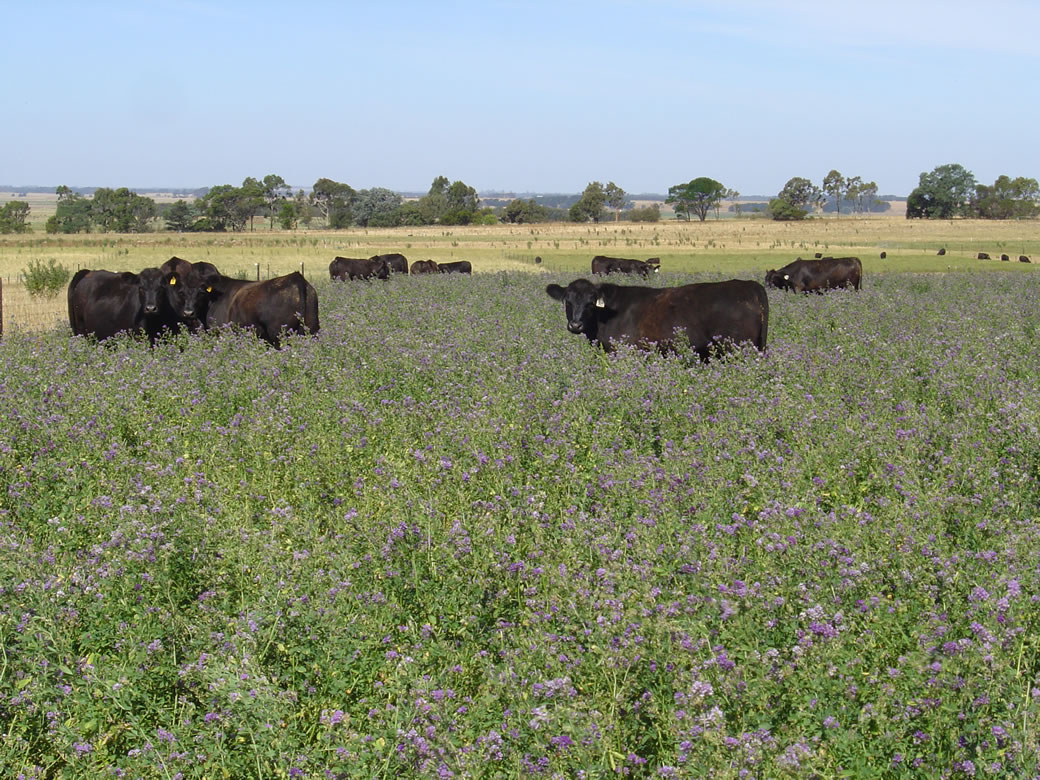
More product per hectare
- Stocking rate varied between 25-32 DSE/ha compared to 16 DSE/ha for the average farm in the Livestock Farm Monitor Project resulting in increased lamb carcass weight and wool production per hectare.
- Wool production varied with the sheep system from 35-64 kg clean wool/ha compared with 35-46 kg clean wool/ha for the top 20% of farms in the Livestock Farm Monitor Project.
- Lamb production ranged from 351-774 kg/ha compared with 215-374 kg/ha for the top 20% of the Livestock Farm Monitor Project farms.
- Beef steer live-weight production per hectare ranged from 644-928 kg/ha compared to 579-732 kg/ha for the top 20% of farm in the Livestock Farm Monitor Project.
Good persistence and ground cover
- Good management – appropriate placement in the landscape, adequate soil fertility, rotational grazing, and destocking once ground cover and feed on offer thresholds were reached – enabled all perennials except kikuyu and chicory to persist for seven years.
- Profitability targets were met while adhering to ground cover (70%) and food on offer (800 kg/ha) thresholds for destocking.
Reduced salinity risk
- Lucerne and chicory fully controlled water loss below the root zone until three years after sowing, at which point the density of chicory declined due to lack of plant persistence. This decline resulted in reduced water use but lucerne continued to control water leakage below the root zone.
- Tall fescue and perennial ryegrass used more water in the valley floors than the annual-dominant failed kikuyu pasture.
Higher profits
- Over four years, applying the EverGraze principles at Hamilton Proof Site resulted in estimated average gross margin of $617/ha (Triple System) and $564/ha (Perennial Ryegrass System). These exceeded the top 20% prime lamb production systems ($484/ha) in the Livestock Farm Monitor Project by 16% and 24% respectively, and the average prime lamb production system ($282/ha) by more than 100%.
- The average gross margin was $23/DSE (Triple) and $21/DSE (Perennial Ryegrass) compared to the district average of $15/DSE.
- Post-experimental modelling confirmed higher profits of $512/ha (Perennial Ryegrass System) and $499/ha (Triple System) compared to $12/ha for a base-case traditional south-west region wool production system.
Reduced risk from diversity of pastures
- Establishing lucerne on the well-drained crests in the Triple pasture system, reduced supplementary feeding cost by $20/hd or $300/ha over the 2006-07 summer following the drought in spring 2006.
Good return on investment
- Economic modelling suggests the internal rate of return from establishing either the Triple or Ryegrass system on 10% of a typical livestock farm in South West Victoria would be between 10-27% and would have a 6-7 year payback period (Lewis et al. 2010). This analysis accounted only for stocking rate increases, with further returns possible from flushing ewes on lucerne, increases in lamb survival and higher finishing weight of lambs sold.
Read more about this research
The challenges
Current average production systems need improving
Most dryland pasture systems in South West Victoria are based on summer dormant cultivars of perennial ryegrass or phalaris (cv. Victorian and Australian) and subterranean clover, with annual weeds such as capeweed, silver grass and barley grass (MLA Pasture Audit). Many perennial pastures contain less than 30% perennials. There is little diversity of new species used when improving pastures and phosphorus application is quite low (9.8 kg /grazed ha). This is reflected in average stocking rates (16 DSE/ha).
Current pasture systems create challenges for meeting livestock requirements. They can be productive during winter and spring, but generally lack summer activity, which can reduce marketing options and create a heavy reliance on supplementary feed over the summer-autumn period. Old cultivars of ryegrass and phalaris (eg. Victorian and Australian) are not as productive as the newer cultivars but continue to be sown as they are considered forgiving in terms of establishment, grazing and persistence.
Pasture utilisation rates are often low, with less than half of producers (43%) using rotational grazing. Set stocking (57%) is the most common grazing practice (Sargeant 2008). Annual cropping systems are becoming more common and the lack of perennials creates issues relating to ground cover, erosion and salinity.
The opportunity
Applying EverGraze principles for more profitable, sustainable systems
EverGraze set out to increase profitability by 50% while maintaining ground cover and perenniality and reducing salinity risk by increasing water use. To achieve this goal, the project applied a principle: Put the Right Plant in the Right Place for the Right Purpose with the Right Management.
Perennial feedbase combinations were combined with high performance livestock enterprises and best practice livestock, soil and grazing management practices, to design farm systems which would achieve the goals. Pre-experimental modelling was used to test the potential of each proposed system.
This page describes how the EverGraze principles were applied at the Hamilton EverGraze Proof Site, and the outcomes in terms of production, persistence and profitability.
What was done
Selecting plant combinations – Right Plant, Right Place, Right Purpose, Right Management
The Right Plant, Right Place, Right Purpose, Right Management principle summarises the considerations for selecting and managing pasture species and cultivars in EverGraze systems. The design of the EverGraze systems experiments took into consideration the given soil types, rainfall, livestock enterprise needs and management requirements when applying the principle.
For the Hamilton EverGraze Proof Site, three perennial pasture systems were developed following pre-experimental modelling and agronomic selection of pastures suited to well-drained crests, slopes and poorly drained clay flats. The systems were:
- Perennial Ryegrass System; early flowering ryegrass (Fitzroy) on the crest, mid flowering ryegrass (Avalon) on the slopes and late season ryegrass (Banquet) on the valley floors (Figure 1).
- Triple System; where perennial ryegrass was replaced with semi winter active lucerne (SARDI Seven), on the crests and summer active tall fescue (Quantum) on the valley floors (Figure 2).
- Novel System; Chicory (Grasslands Puna) was used on the crests, Italian (2006, 2007)/late finishing perennial ryegrass (Banquet) (2008) ryegrass on the slopes and kikuyu (Whittet) on the valley floors (Figure 3).
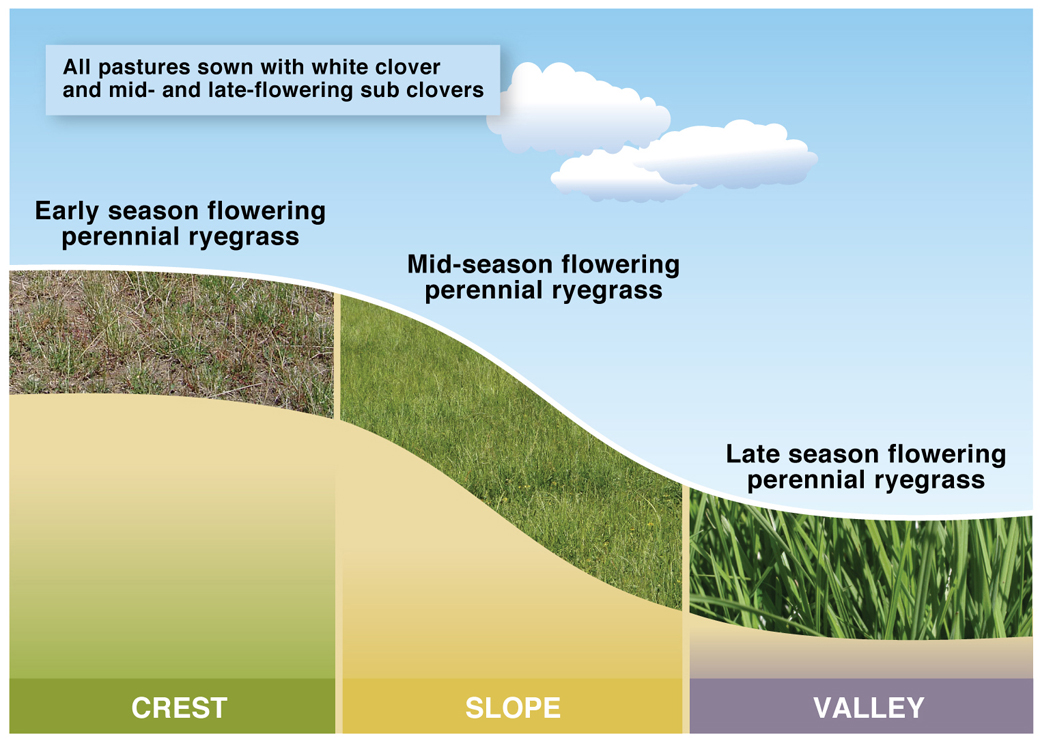
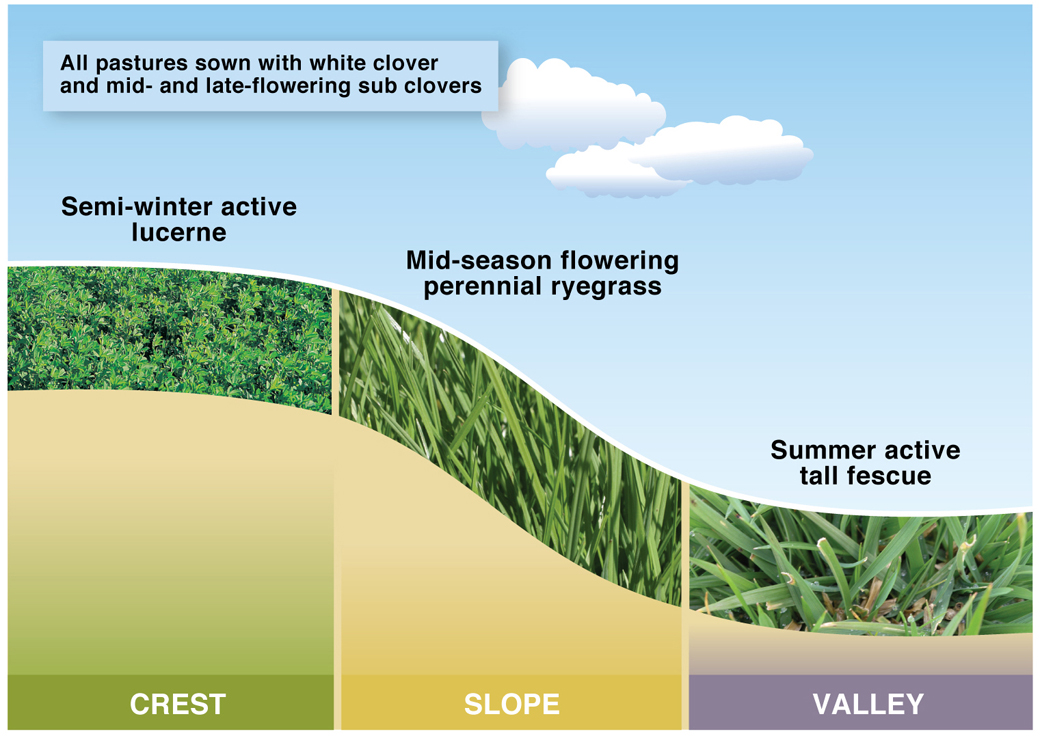
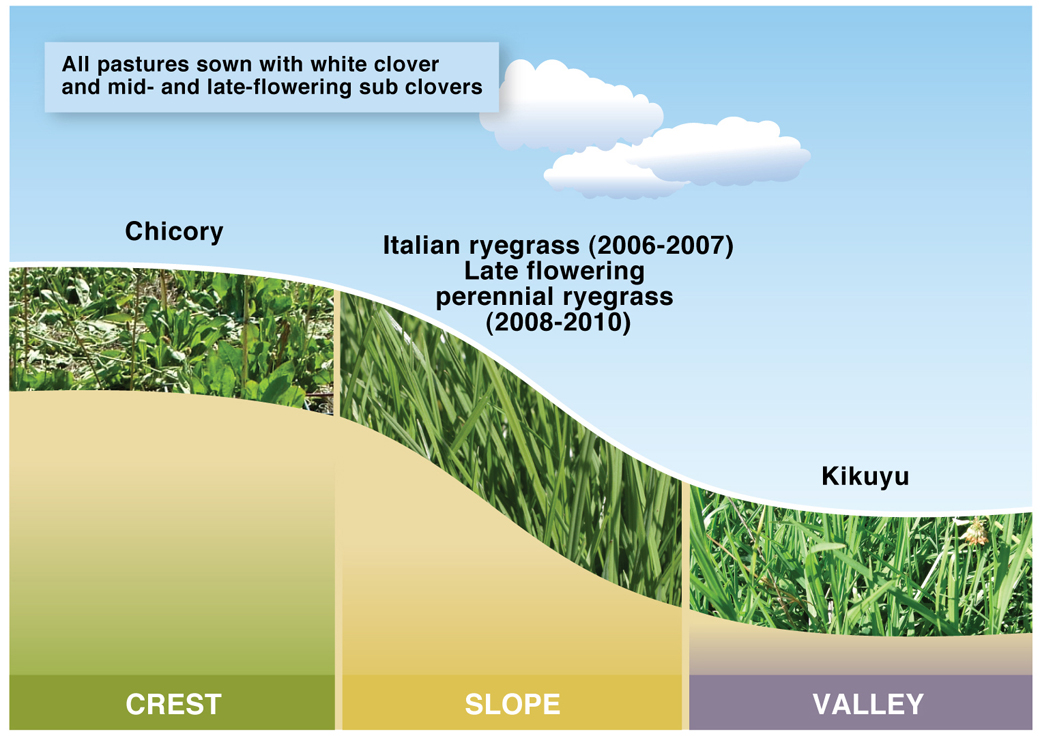
Clovers
All pastures were sown or oversown with a mix of subterranean clovers (cv. Leura and Gosse) and white clover (cv. Mink). The subterranean clover cultivars were chosen to provide a mix of flowering/maturity dates, variation in hardseedness and variation in their production and suitability to different soils and environments. Leura sub-clover is a subterranean sub-species, that is late maturing and has been shown to produce well and maintain high quality feed late into the season in this high rainfall environment and is suited to well drained loamy soils. Gosse sub-clover is a member of the yanninicum group with a mid-season flowering date, is tolerant of waterlogging and performs well on slightly acid predominately clay soils. Both these sub-clovers became the dominant legumes in the systems compared to the white clover representing approximately 20-30% of the sward during the growing season.
Establishment
Each system replicate was made up of three paddocks (crest, slope and valley floor), each of about half a hectare. The summer active perennials (kikuyu, tall fescue, lucerne and chicory) were established in the spring of 2004, while the temperate perennials (perennial and Italian ryegrasses) were sown in autumn 2005. Subterranean clover was over-sown into all plots in autumn 2005.
Sowing rates and fertiliser treatments at Hamilton are provided.
Right soil management
At the Hamilton EverGraze site, soils were managed to maintain an Olsen phosphorus level of 15 mg/kg. Soil acidity was also addressed on the crests with agricultural lime.
Best practice soil phosphorus use was based on outcomes from the Hamilton Long Term Phosphorus Experiment (LTPE) which demonstrated that maintaining good soil fertility (particularly phosphorus) is fundamental to maximising pasture production and stocking rates, maintaining pasture composition and achieving higher pasture quality for longer. In the Hamilton LTPE, stocking rates, pasture growth and pasture composition varied with different rates of soil fertility.
Information on making decisions on phosphorus use for your own farm can be found in the MLA Phosphorus Tool.
Right grazing management
Grazing management was based on outcomes from Hamilton and Broadford Grazing Experiments which demonstrated that rotational grazing was needed to maximise persistence, production and utilisation of perennial pastures. Each pasture system at Hamilton was divided into three paddocks – crest, slope and valley floor (each about one hectare). Rotations were predominately based on allowing the perennial ryegrass and tall fescue to re-grow three leaves prior to grazing, resulting in rotations of 14-28 days in spring, 28-42 days in summer/autumn and 42-56 days in winter.
To avoid erosion risk and maintain pasture persistence, EverGraze ground cover and food on offer (FOO) thresholds were applied – livestock were removed from pastures and containment fed when ground cover dropped below 70% or FOO reached 800kg DM/ha.
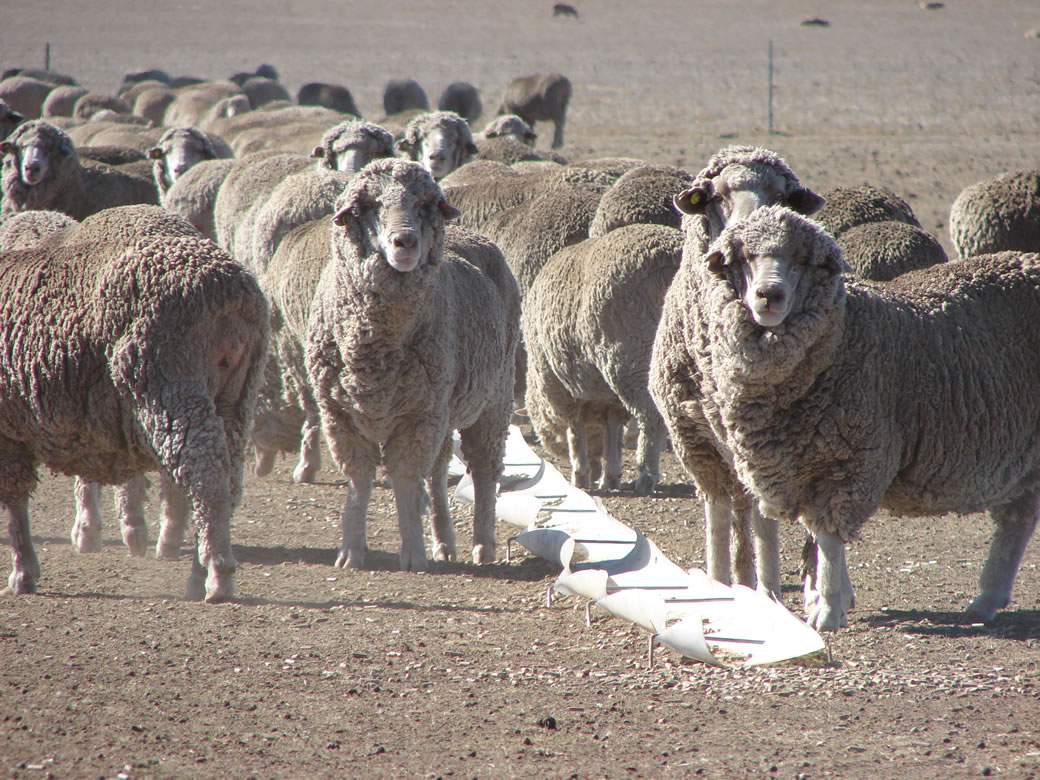
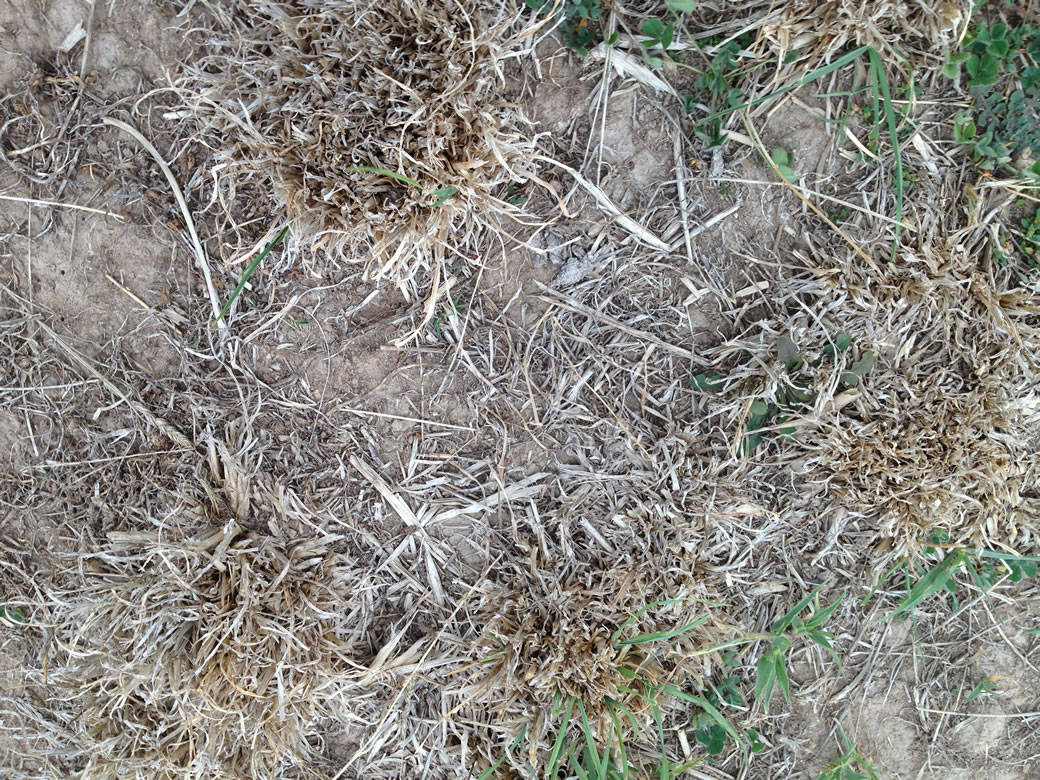
Optimising enterprise and livestock management
A key element of the EverGraze principles recognises that to achieve profit and risk objectives, investing in improved perennial pastures needs to be combined with highly productive livestock and optimum tactical management.
CentrePlus and Toland Merino ewes were joined to terminal sires. The ewes were put on the pasture in February 2006 and lambed down as either single or twin bearing ewes in 2006 and 2007. Merino and Coopworth ewes (joined to terminal sires) were subsequently stocked on the site from May 2008 and they lambed in September 2008 and August 2009 as flocks containing scanned single, twin and triplet bearing ewes.
A steer/heifer back-grounding system was also run, with the animals stocked in autumn 2006, 2007 and 2008, and sold the following December or January.
A cow-calf system grazed from January 2009, with Angus- and Charolais-cross cows mated to Angus bulls for a September calving.
Table 1 shows the treatment design and matrix applied across the experimental site at Hamilton. The carrying capacity of the different pasture systems was an outcome of the experiment. Each month, feed on offer (FOO) was determined and the number of stock in a paddock was adjusted if necessary to ensure that the average FOO on all systems was similar and aligned with achieving condition score targets set to optimise reproductive performance by following Lifetimewool guidelines.
Table 1. Matrix of pasture and sheep systems with potential lambing percentage at allocation for each year 2006 to 2009.
|
Year |
Novel pasture System |
Ryegrass Pasture System |
Triple Pasture System |
|
2006 & 2007 |
Merino Single lambs 100% |
Merino Single lambs 100% |
Merino Single lambs 100% |
|
Merino Twin Lambs 200% |
Merino Twin Lambs 200% |
||
|
2008 |
Merino Scanned 129% |
Merino Scanned 129% |
Merino Scanned 129% |
|
Coopworth Scanned 179% |
Coopworth Scanned 179% |
||
|
2009 |
Merino Scanned Average 149% |
Merino Scanned Average 156% |
Merino Scanned Average 152% |
|
Coopworth Scanned Average 185% |
Coopworth Scanned Average 184% |
What was found
Higher production and quality from pastures for longer
Establishing a diversity of summer and winter active perennials in the right parts of the landscape resulted in good pasture production and a longer growing season. The Triple and Ryegrass systems produced between eight and 12 tonnes of dry matter per hectare (DM/ha) per year depending on rainfall amount and distribution (Figure 4).
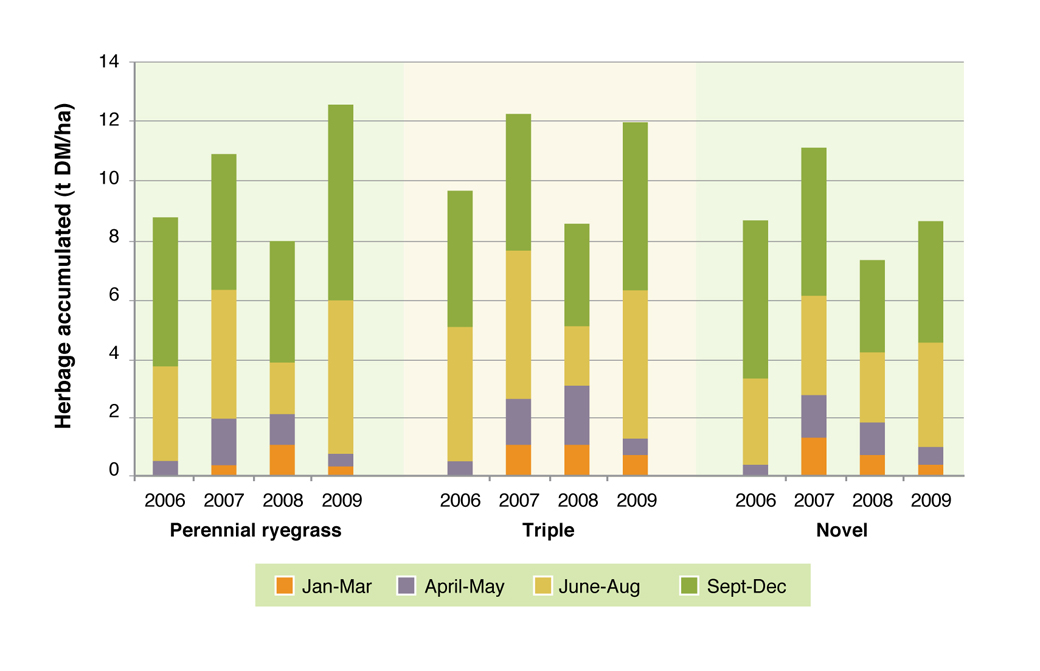
Individual species and land type combinations produced up to 15 tonnes DM/ha. Winter pasture growth rates ranged from 40-60 kg DM/ha per day in the warmer and drier winters contributing significantly to the overall dry matter produced. Lucerne and chicory produced between 1-3 tonnes of DM/ha over summer and autumn in response to rainfall during that period.
Pasture growth at the Hamilton Proof Site is highly dependent on rainfall, temperature and recent spray applications, as shown by average, maximum and minimum growth rates measured for each of the pastures from 2006-10.
Growth rates for individual species and systems are for the “pasture” as a whole, and therefore include contribution from clovers, broadleaf weeds and annual grasses. All systems had good proportions of late-flowering sub clover which provided quality feed throughout the growing season. Annual grasses and broadleaf weeds also contributed significantly to pasture composition during the growing season.
Good persistence and ground cover
The average return on investment for perennial pastures is five to seven years (EverGraze Supporting Site report), so it is important they persist for longer than this so their benefits are realised. At Hamilton, all perennials, except kikuyu and chicory, persisted for more than seven years due to good management (Figures 5, 6 and 7). This included appropriate placement in the landscape, adequate soil fertility, rotational grazing and destocking at feed on offer (800 kg DM/ha) and ground cover (70%) thresholds. Profitability targets were met while adhering to these thresholds. Perennial ryegrass was found to recruit seedlings to maintain numbers throughout the experiment. Chicory also recruited seedlings after its second year but declined in numbers from 2008.
In general, sown perennials for all pastures, except chicory and kikuyu, maintained between 40-60% of composition during the growing season and up to 100% during summer. Sub clover played an important role in driving production and made up around 20% of pasture composition in most pastures. See summary of pasture composition data for details.
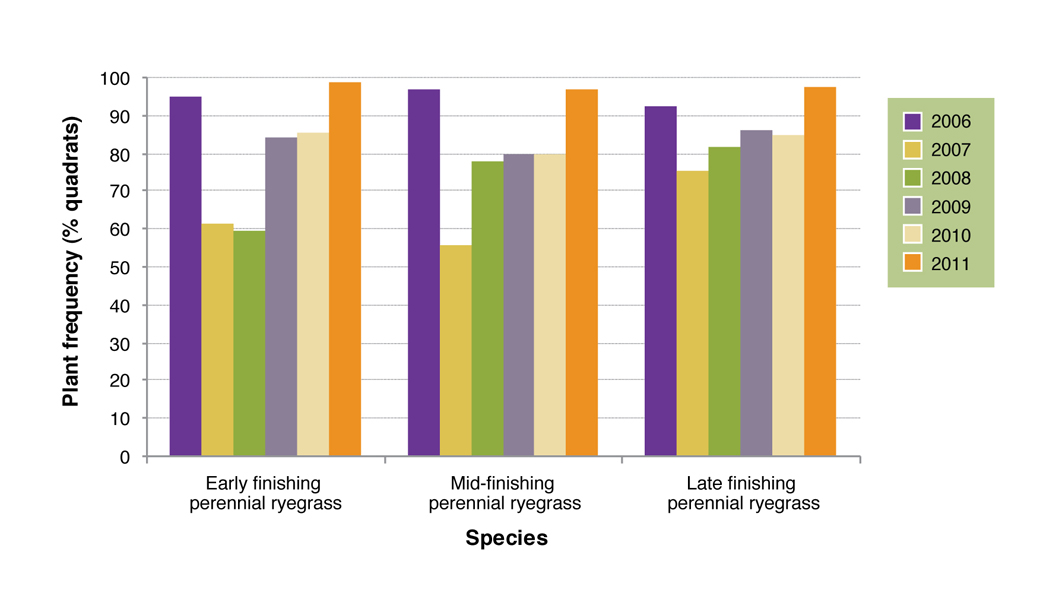
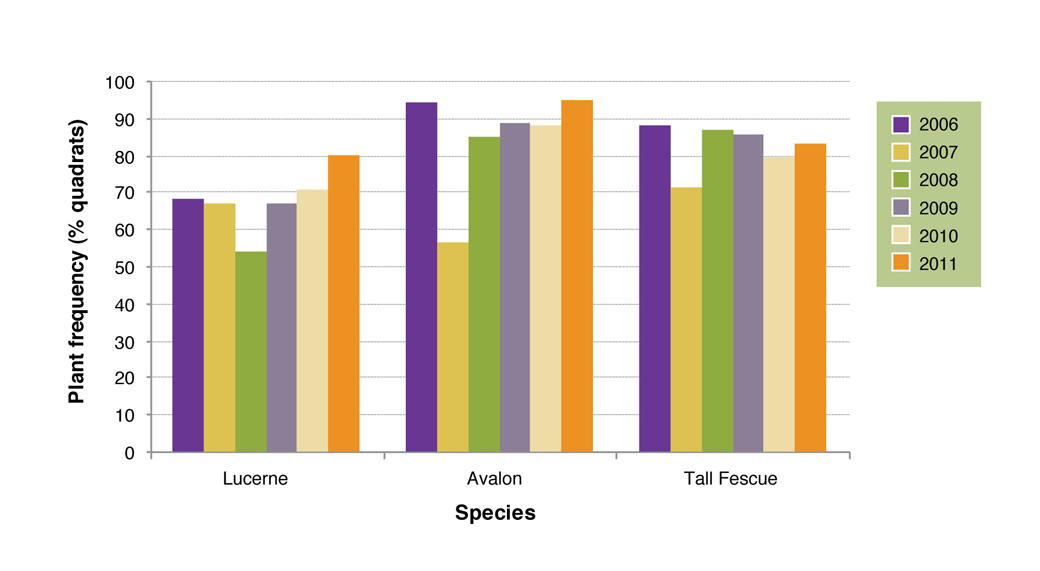
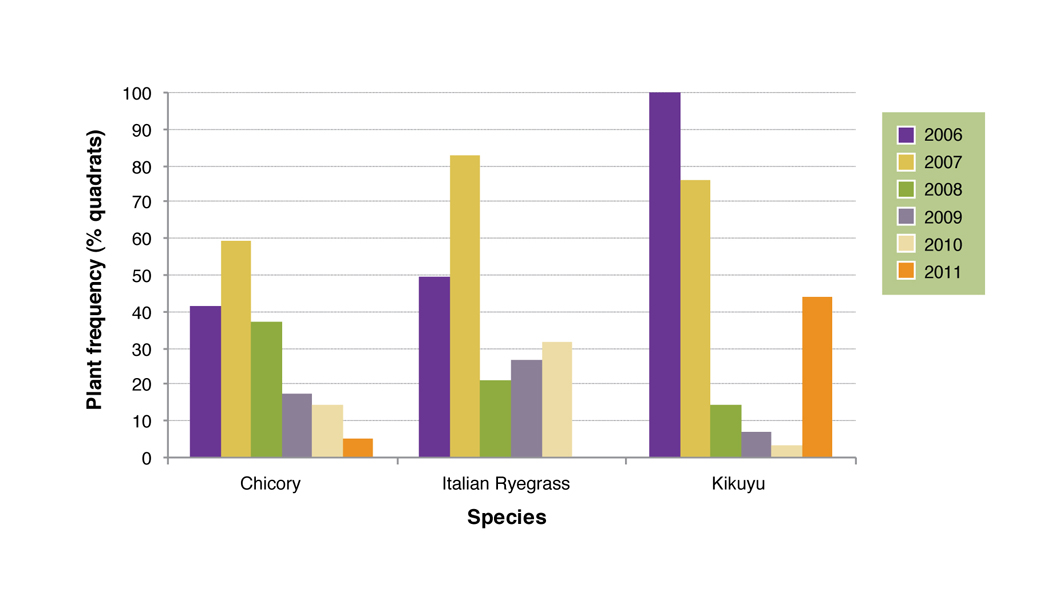
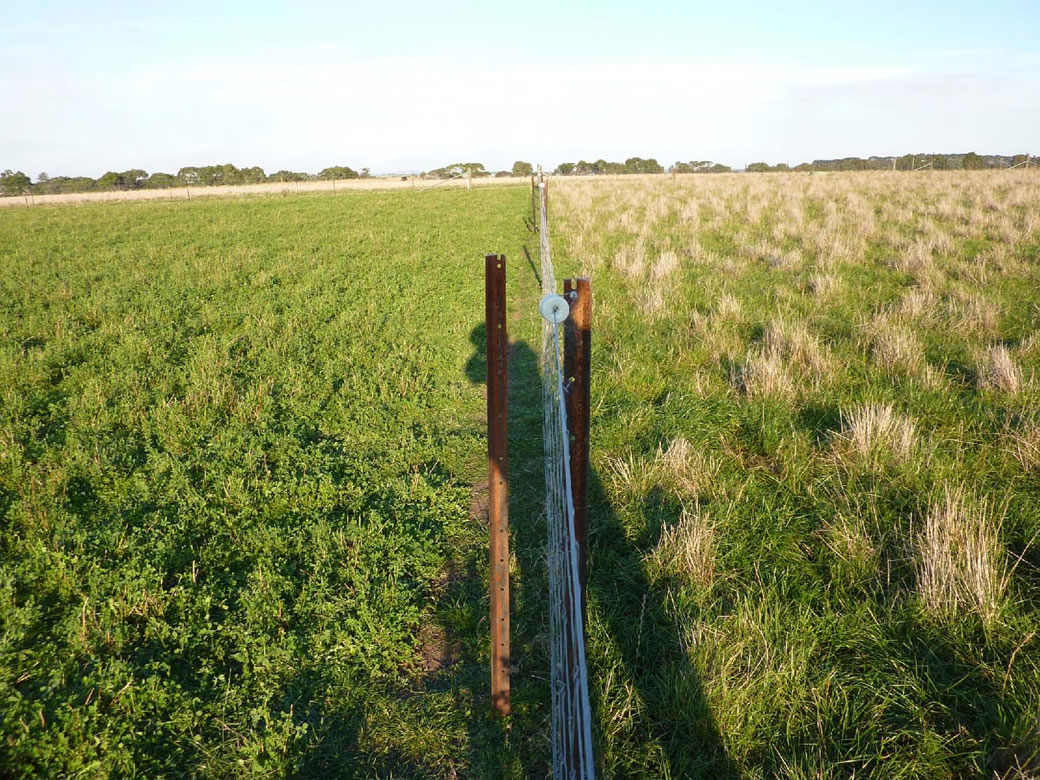
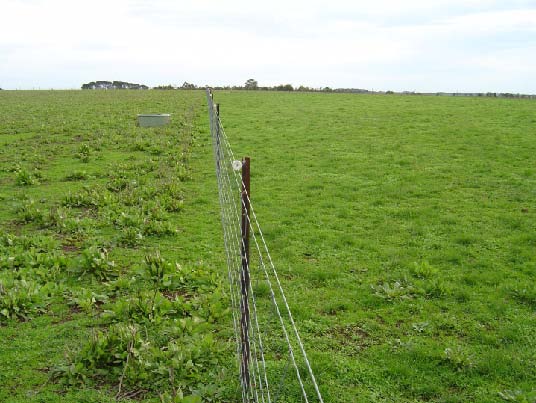
Increased product per hectare
Significant improvements in pasture growth, summer feed quality and pasture utilisation, combined with management of ewes to condition targets, resulted in higher stocking rates, weaning percentages and overall production.
Stocking rates from 2006-10 were between 14-16 ewes/ha (25-30 DSE/ha) for the Merino x Terminal system and 11-12 ewes/ha (27-31 DSE/ha) for the Coopworth system. These figures are significantly higher than the stocking rate of the average Livestock Farm Monitor Project which achieved 16 DSE/ha over the same time period.
Average weaning percentages were 104% in the Merino system and 147% in the Coopworth system. These figures were again significantly higher than the average South West Farm Monitor, which in 2009-10 achieved 80% and 118% for Merino and Coopworth systems respectively.
Lamb production ranged from 351-774 kg/ha compared with 215-374 kg/ha for the top 20% of the farms in the Livestock Farm Monitor Project.
Wool production varied with sheep system from 35-64 kg clean wool/ha compared with 35-46 kg clean wool/ha for the top 20% South West Farm Monitor.
Beef steer liveweight production per hectare ranged from 644-928 kg/ha compared to 579-732 kg/ha for the top 20% of farms in the Livestock Farm Monitor Project.
It should be noted that the above stocking rates, weaning percentages and production were achieved under experimental conditions. Running high stocking rates requires high attention to livestock and pasture management.
To read more about the livestock production outcomes and stocking rate and enterprise comparisons, see Hamilton EverGraze research – livestock systems for maximising profit from perennials.
Reduced salinity risk
Measurements of water use confirmed that lucerne and chicory fully controlled water loss below the root zone until three years after sowing when chicory’s density declined due to lack of plant persistence (Figure 8). Lucerne continued to control recharge. Compared to the kikuyu pasture which became dominated by annuals after the first two years, the perennial-dominant tall fescue and perennial ryegrass pastures also kept the soil profile drier at a depth of 1.25-2.25m (Figure 9). At greater depth on the valley floors, there was no difference in soil water content between species.
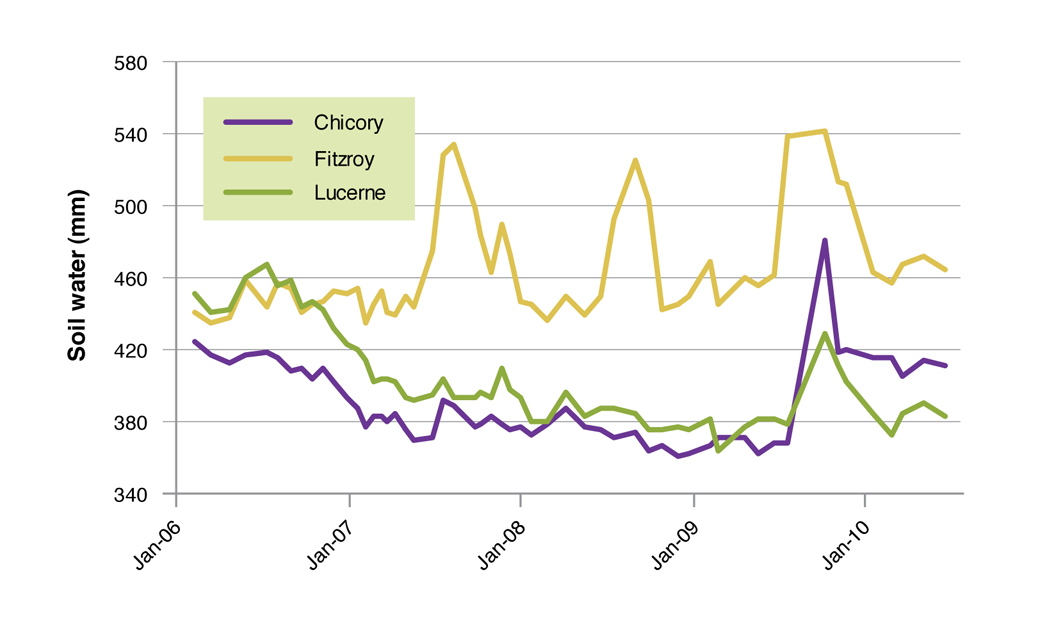
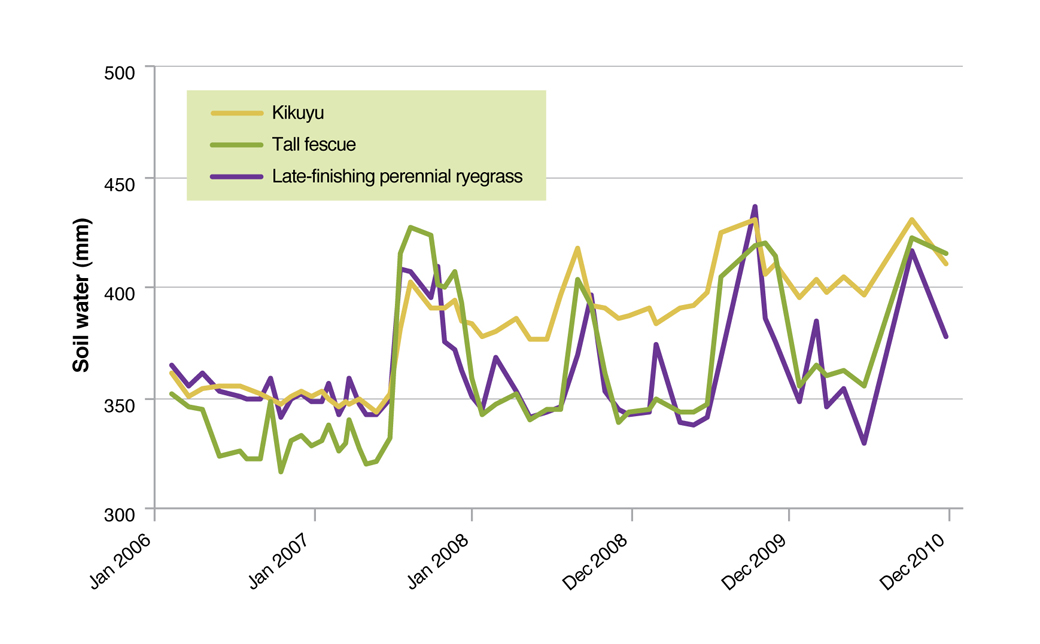
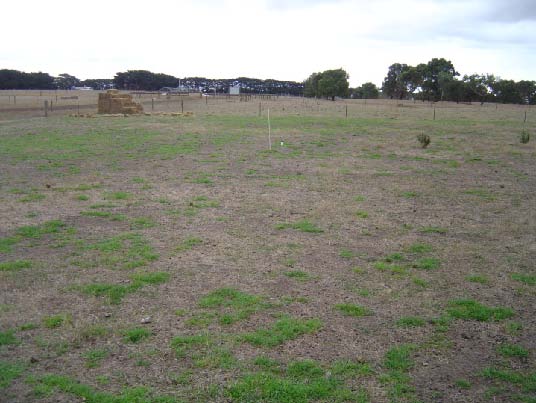
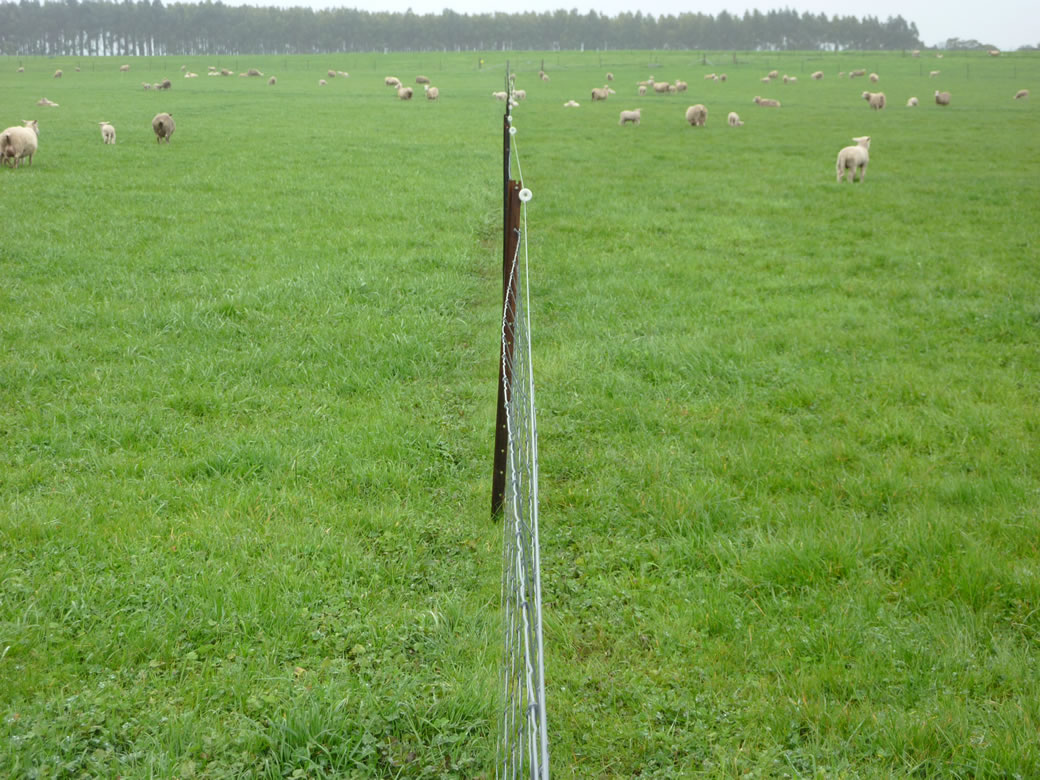
Further details on these results can be found on Hamilton research pages – Lucerne reduces risk, provides options for livestock and prevents salinity; and EverGraze systems reduce recharge in the Wannon Catchment.
Crunching the numbers
Higher Gross Margins
Over four years, applying the EverGraze principles at the Hamilton EverGraze Proof Site resulted in estimated average Gross Margins of $617/ha (Triple System) and $564/ha (Perennial Ryegrass System) (Figure 10). These exceeded the top 20% prime lamb production systems ($484/ha) in the Livestock Farm Monitor Project project by 16% and 24% respectively, and the average prime lamb production system ($282/ha) by more than 100%. Gross margins per DSE averaged over four years were $23/DSE (Triple System) and $21/DSE (Perennial Ryegrass System), compared to $15.50/DSE for average farms in the region.
The full production and economic results for the Hamilton EverGraze Proof Site are available.
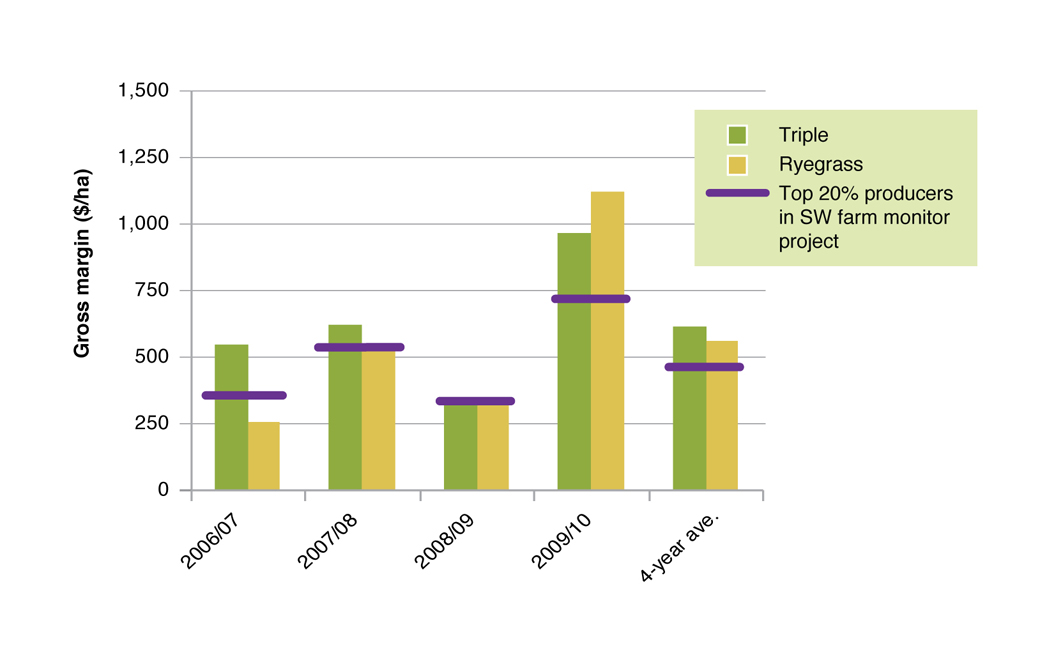
The Gross Margin figures stated above indicate these pasture systems are very profitable in a “steady state”. These figures don’t include initial cost of investment, subsequent increases in stocking rate or risk of establishment failure, which can impact on cash flow over time. Risk of establishment failure is often viewed as a barrier to adoption particularly when renovating pastures with less familiar species.
Higher profits
Post-experimental modelling (Young 2011) showed substantially increased profits from the Ryegrass and Triple systems when compared to a “Base Case” average wool producing farm scenario modelled using GrassGro pasture outputs. For the terminal enterprise, profitability of the Base Case was $12/ha compared to $510/ha for the Ryegrass system and $499/ha for the Triple system (Table 2).
Table 2: Modelled profitability comparisons (GrassGro) between Base Case, EverGraze Triple and EverGraze Ryegrass systems where the assumptions for the Ryegrass and Triple systems are derived from experimental data.
| Base Case | Ryegrass | Triple | |
| Profit ($/ha) | 12 | 510 | 499 |
| Stocking rate (DSE/ ha) | 10.0 | 20.3 | 19.7 |
| (Ewes/ha) | 5.9 | 14.3 | 13.9 |
| Supplementary feed (kg/DSE) | 110.2 | 36.4 | 33.2 |
| Flock Structure (% ewes) | 84% | 100% | 100% |
| Lambing (%) | 85% | 89% | 89% |
| Area perennial ryegrass (% of farm) | 100% | 100% | 60% |
| Area lucerne (% of farm) | 0% | 0% | 20% |
| Area fescue (% of farm) | 0% | 0% | 20% |
| Pasture Growth (t/ha) | 7.4 | 11.6 | 11.3 |
| Pasture utilisation (%) | 40% | 54% | 54% |
| Wool income ($/ha) | 288 | 523 | 506 |
| Sale sheep income ($/ha) | 202 | 444 | 430 |
| Leakage of water below the root zone (mm) | 130 | 121 | 99 |
Good return on investment
To examine how profitable these pasture systems were relative to their persistence and risk of failure, the investment was modelled over 12 years, sown as 10% (100ha) of a 1000ha representative farm with an initial ‘average stocking rate’ of 16.2 DSE/ha (Lewis 2012).
The internal rate of return from establishing either the Triple or Ryegrass system on 10% of a typical livestock farm was about 10-27%, and the payback period varied from 10 to 6 years 13 when establishment was successful, under all stocking rates tested (from 16.2 DSE/ha to 36DSE/ha) (Figure 11). (Note: The Internal Rate of Return = if all the money was borrowed for the investment the IRR would represent the maximum interest rate the investor could afford to pay on the loan without losing money).
Key drivers for profitability of these systems included persistent pastures with improved production; reduced supplementary feeding costs in poor years; and increased product per hectare. The lowest stocking rate tested (16.2 DSE/ha) was the same as the base case. It was shown that, once successfully established, the improved pasture could be less risky at this stocking rate than the base case pasture, due to reduced need for supplementary feeding.
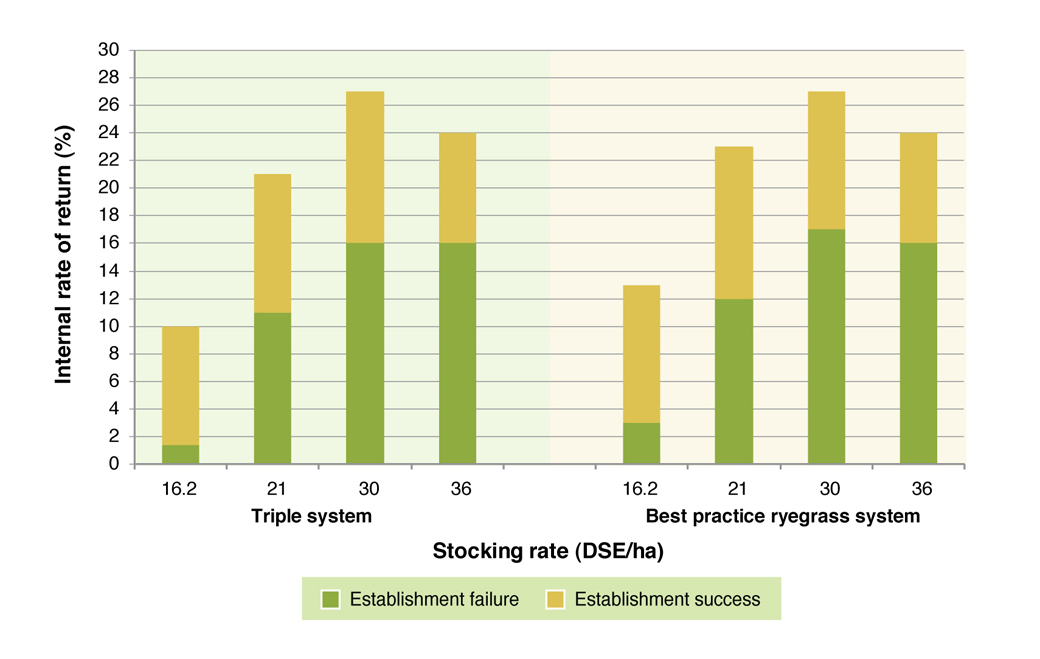
Establishment success and higher stocking rates maximise the benefits
The success of the pasture establishment was important to the internal rate of return (IRR), although the analysis showed that a positive return could still be achieved in a scenario of establishment failure, resulting in approximately half of the IRR expected with establishment success (Indicated by the green bar in Figure 11).
For both systems, the supplementary feeding cost required to sustain the higher stocking rates (beyond 30 DSE/ha), began to outweigh the additional income from livestock. These results highlight the importance of optimising stocking rate and the trade-off between risk and return.
If there wasn’t a stocking rate increase above the existing carrying capacity (16.2 DSE/ha), establishing the pastures was still profitable (reflected in the figures of 10-14% IRR shown in Figure 11) but there were a number of risks; it could take another 3-4 years to pay back the investment, by which time the pasture may be beyond its most productive; or if there was a failure in the first year and the stocking rate was not lifted after re-establishment then the investment wouldn’t service the debt.
Reduced risk from diversity of pastures
The right combination of perennials across the farm and tactical management creates flexibility and reduces seasonal risks while creating buying and selling opportunities.
Greater flexibility resulted from the diversity of species across the landscape in the EverGraze systems at Hamilton. The value of combining summer and winter active perennials in the Triple system was demonstrated in the dry spring of 2006, and the following summer and autumn (2007). The response of lucerne to summer rainfall in early 2007 saved $295/ha in supplementary feeding costs, resulting in gross margins of $547/ha in the Triple system compared to $257/ha in the Ryegrass system. This saving of nearly $300/ha in the drought was close to the cost of establishment for the lucerne. In most years, time off pasture due to summer/autumn destocking at ground cover and feed on offer thresholds also tended to be greater for the Ryegrass system than the Triple system.
In addition to reduced supplementary feeding costs, modelling work demonstrated that including lucerne in the system provided opportunities to increase weaner weights and survival, flush ewes for increased conception, and target different markets.
In general, having access to a diversity of pastures can provide flexibility in livestock management, providing access to alternatives when animal health issues, such as bloat and ryegrass/phalaris staggers or toxicity, are an issue.
See Lucerne reduces risk, provides options for livestock and prevents salinity for further detail.
What it means
Applying EverGraze principles to your unique farm system
The systems implemented at Hamilton EverGraze Proof Site demonstrated that, by combining best practice grazing, soil and livestock management practices developed from previous research, and applying the EverGraze principles, it is possible to develop persistent perennial systems which significantly increase profitability of livestock enterprises while also improving flexibility, risk management, and natural resource management. However, the exact agronomic selections and practices implemented at Hamilton won’t necessarily apply to the unique soils, landscapes, livestock systems and management regime on your farm. Pushing stocking rates and productivity higher requires greater attention to management of livestock and pastures.
EverGraze Exchanges “Making Strategic Decisions On-Farm”, “Pastures for Place and Purpose”, “Profitable Livestock Systems”, and “Nuts and Bolts of Grazing Strategies”, provide the steps and considerations for applying EverGraze principles to make changes to your farm system.
Is pasture establishment needed?
Establishing new pastures won’t always be the most profitable solution for increasing productivity. Other considerations include changes to soil fertility, stocking rates or grazing management to improve pasture utilisation, composition, quality and production. See investing in pasture establishment to determine the most appropriate course of action.
The place, purpose and management
Understanding your soils (fertility, soil type, drainage) and climate (rainfall pattern and temperature) will determine suitability of species and cultivars for your landscape. The right plant will also be one that will persist for long enough to pay back your investment.
Consider the purpose of your pasture. Which feed gap are you trying to fill? Are you aiming to target a different market or increase opportunities to buy and sell at a different time? Do you need to manage risk of supplementary feeding at a particular time of year? Is the area you plan to establish large enough to fit your intended purpose? What environmental factors need to be considered? Do you need to increase the diversity of pastures on your farm to manage animal health risks?
Consider the management requirements of your new pasture. Will establishing this pasture fit with the seasonal management requirements of other pastures on your farm, and your preferred grazing system?
Remember that increasing stocking rate or pasture diversity increases complexity and the need for management and planning including on issues such as weed control and animal health.
Will the changes pay?
As demonstrated at Hamilton, the potential for new pastures to increase profitability is dependent on the livestock enterprise used, combined with management of soils, grazing and livestock. Use of a diverse range of pasture species may also create buying and selling opportunities and/or reduce supplementary feeding costs.
In addition to the Proof Site analysis, EverGraze has conducted a number of financial case study analyses from Supporting Sites in south west Victoria and other regions.
Modelling for a real farm in south west Victoria showed that by correcting soil nutrient and stocking rate deficiencies, and implementing EverGraze systems to 10% of the farm, Gross Margins for both cattle and sheep enterprises could be increased by around 50%. Adding lucerne to the cattle system generated an additional $70/ha Gross Margin due to reduced supplementary feeding costs. Greater Gross Margins were generated in all systems analysed in the worst 10% of years. Adding lucerne to the farm also reduced recharge. See the full case study for further details.
You can also conduct a simple analysis for your own scenario using the EverGraze Pasture Improvement Calculator.
Acknowledgements
EverGraze is a Future Farm Industries CRC research and delivery partnership. The Hamilton EverGraze Proof Site team was led by Dr Ralph Behrendt and consisted of scientists and technical staff from Agriculture Victoria. An enthusiastic Regional Advisory Group consisting of farmers, consultants, extension officers and Catchment Management Authority staff provided significant input into the direction, management practices and interpretation of outcomes from the experiment and modelling to make them relevant to farmers.
Further Information
- Behrendt, R. and Young J. EverGraze Pastures for Purpose Proceedings of the 51st Annual Conference of the Grassland Society of Southern Australia Inc 2010.
- Broadford Grazing Experiment
- Hamilton EverGraze Research: Lucerne reduces risk, provides options for livestock and prevents salinity
- Hamilton EverGraze Research: Livestock systems for maximising profit from perennials
- Long Term Phosphorus Experiment
- EverGraze Exchange – Making on-farm strategic changes
- Morant A, Saul G, Hamilton EverFarm – Making strategic decisions on farm
- Lewis C, Malcolm B, Farqueson R, Leury B, Behrendt R, Clark S (2012), Economic analysis of improved perennial pasture systems, Australian Farm Business Journal 9 (2), 37-56.
- Sargeant K, Couttes J 2012, EverGraze Supporting Sites report
- Waller RA, Sale PWG, Saul GR, Kearney GA (2001). Tactical versus rotational stocking in perennial ryegrass-subterranean clover pastures grazed by sheep in south-western Victoria. 3 Herbage nutritive value and animal production. Australian Journal of Experimental Agriculture 41, 1121-1131
- Warn, L. (2011) Hamilton EverGraze Proof Site: Report on the impact of changing management regimes on profitability. August 2011, Mackinnon, University of Melbourne
- Young, J. Bathgate, A. and Behrendt, R. (2011) Final MIDAS modelling for Hamilton EverGraze site.
- Young J.M., Thompson A.N. and Kennedy A.J. (2010). Bioeconomic modelling to identify the relative importance of a range of critical control points for prime lamb production systems in south-west Victoria. Animal Production Science. 50: 748-756
- A simple guide for perennial pasture establishment

